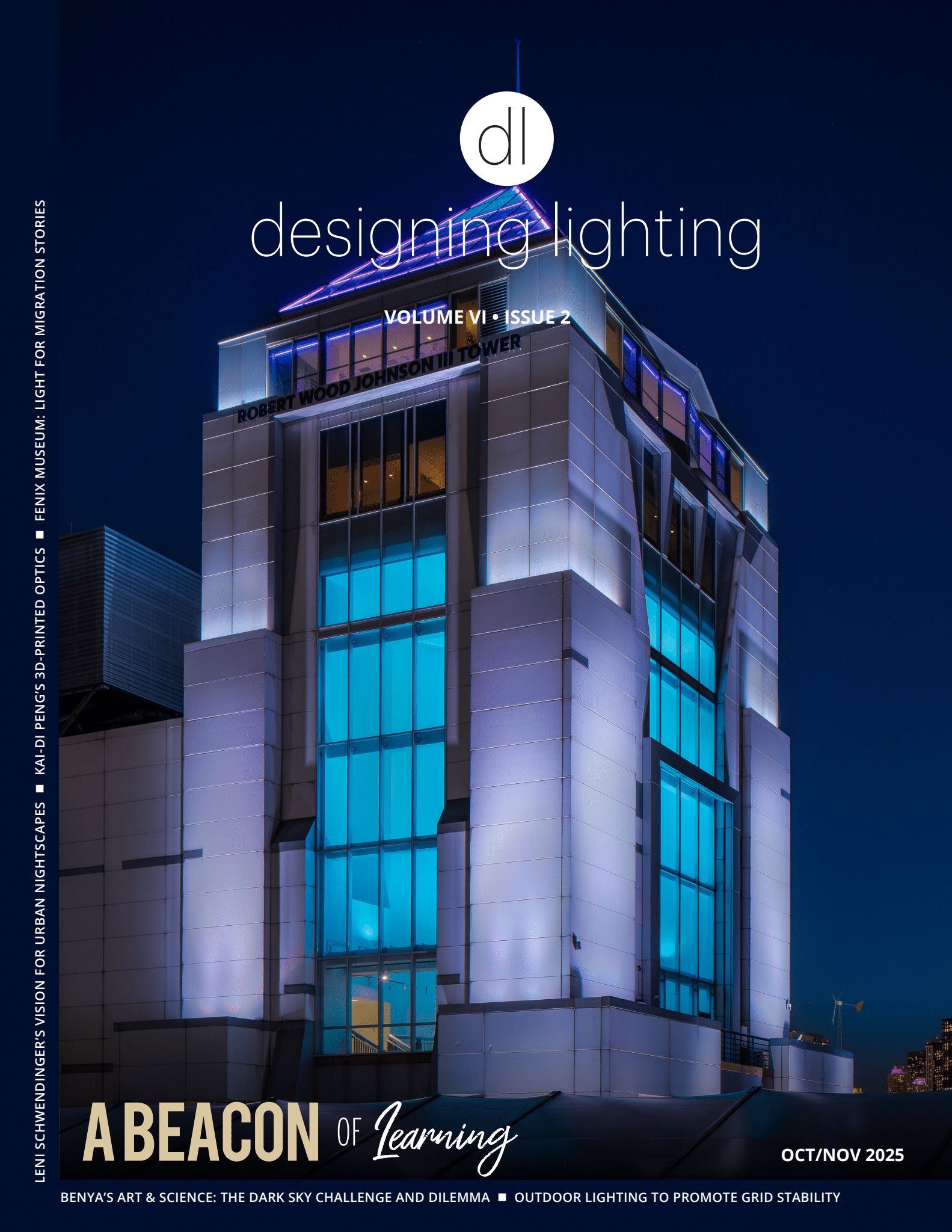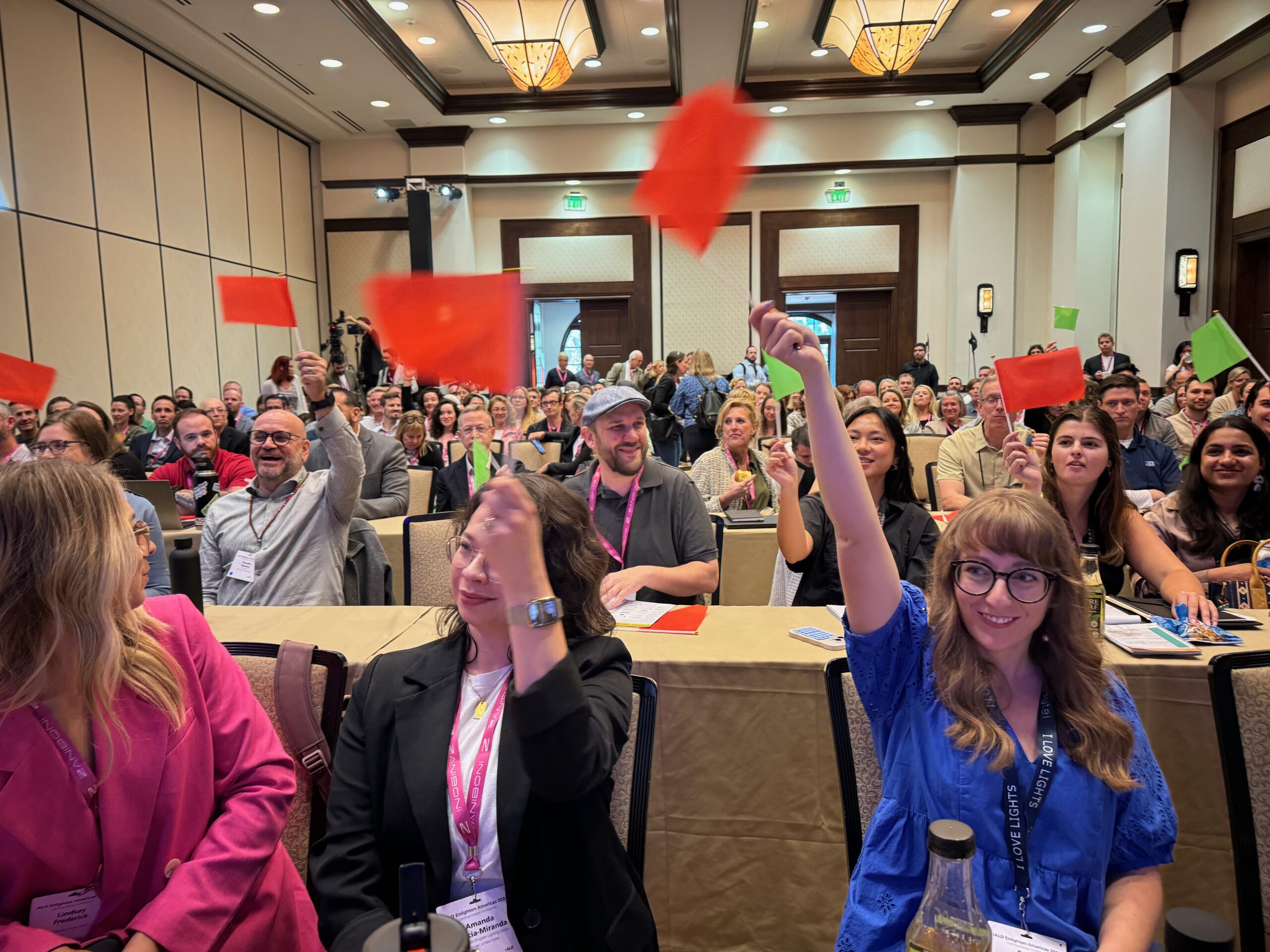A Plan to Achieve Greater Transparency in the Lighting Channel (Round 3 of 3)
At the IALD Enlighten Americas Conference, Steven Rosen, FIALD, Principal of Available Light, moderated one of the most complex discussions. The session focused on transparency and collaboration within the lighting industry. In previous sessions held in Palm Springs (2022) and Banff (2023), the panel addressed improving the relationship between lighting designers, manufacturers, and the broader lighting channel. However, one criticism was a lack of actionable solutions to achieve better outcomes in the lighting specification world. This third and final session aimed to bridge that gap.
A Panel of Industry Leaders
The panel featured industry leaders like Nancy Stathes, Alexis Arnoldi, IALD, and Chip Israel, FIALD. Together, they discussed major challenges in the lighting channel, such as pricing transparency and the role of emerging professionals. Another panel included Bruce Dalrymple from Performance Lighting, Daniel Clark from Walters Wholesale Electric, and Lara Cordell from Wiedenbach Brown, who shared their insights.
Building Trust and Community
Steven Rosen opened the session by setting the tone. “Our goal today is to build trust and community,” he began, addressing an audience that spanned from students and emerging professionals to seasoned designers and manufacturers. “The conversation we have here today should not stay in this room. It should leave with you, continue with your colleagues and the people you negotiate with.” Steven emphasized the importance of collaboration throughout the session, urging attendees to apply the lessons beyond their immediate circles. This collective mindset, he noted, is vital for long-term success in the industry.
Steven introduced Nancy Stathes, who has played significant roles in the IALD Education Trust and the Business of Light. “Nancy’s mission has been to produce high-quality products that meet the needs of the specification market,” Steven remarked, commending her commitment to the industry.
Celebrating Community and Emerging Talent
During the introduction, Nancy took a moment to honor Jimalee Beno, acknowledging her contributions to the field and celebrating her receipt of the EdisonReport Lifetime Achievement Award. “Jimalee has so much behind her professionally and so much ahead of her,” Nancy said warmly. “If you haven’t hugged her yet, you need to—because knowing her will change your life.”
In turn, Jimalee introduced Alexis Arnoldi. “When I first met Alexis, he was early in his career, and I had no idea how much he would contribute—not only through his designs but through his service to the community,” Jimalee shared. “There’s so much more we’ll see from him in the future.”
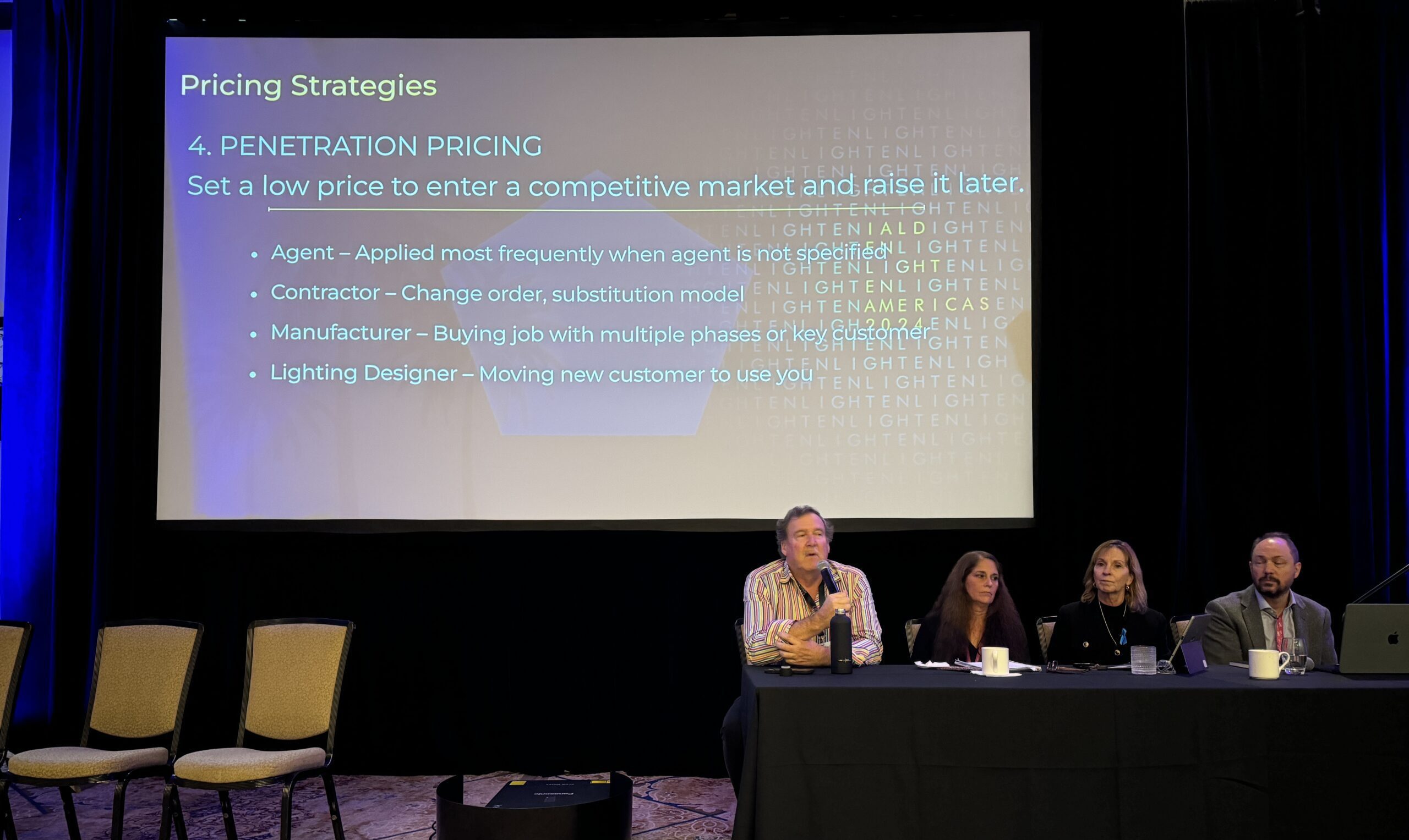
Chip Israel discusses transparency with different pricing strategies
Tackling Transparency
Chip Israel shifted the conversation toward transparency. He pointed out that lighting designers now face additional responsibilities, including accounting and tracking budgets. Chip emphasized that despite common perceptions, the product chain is generally fair. “Everyone is getting fair reimbursement for their efforts,” he noted. He also stressed the unseen efforts made by distributors and reps to keep projects on track.
Nancy then shifted focus to the rapidly evolving market, discussing the pressures facing manufacturers, distributors, and designers. “We have more manufacturers than ever before, all competing for a piece of the pie,” she noted. She highlighted how technology, particularly AI tools, transforms the landscape by enabling easy conversions of specifications into other products. “The market’s slow growth, combined with high costs, is putting immense pressure on everyone,” Nancy concluded, underscoring the need for industry adaptation.
The Role of Transparency in the Lighting Channel
The need for transparency was a key theme throughout the discussion. Chip reiterated that pricing and specification transparency are vital for protecting budgets and delivering quality designs. “We understand everyone needs to make a profit, but the process must align with the effort put in by the team,” he stated. Steven agreed, stressing the importance of empathy and open communication in resolving industry challenges.
Overcoming Key Challenges
The panel also addressed several pressing issues, including market consolidation and the increasing complexity of project specifications. Nancy highlighted the pressures on distributors to maintain profitability while delivering value. Alexis discussed rising competition and the impact of globalization, explaining that manufacturers can now source parts internationally, assemble them, and ship them out.
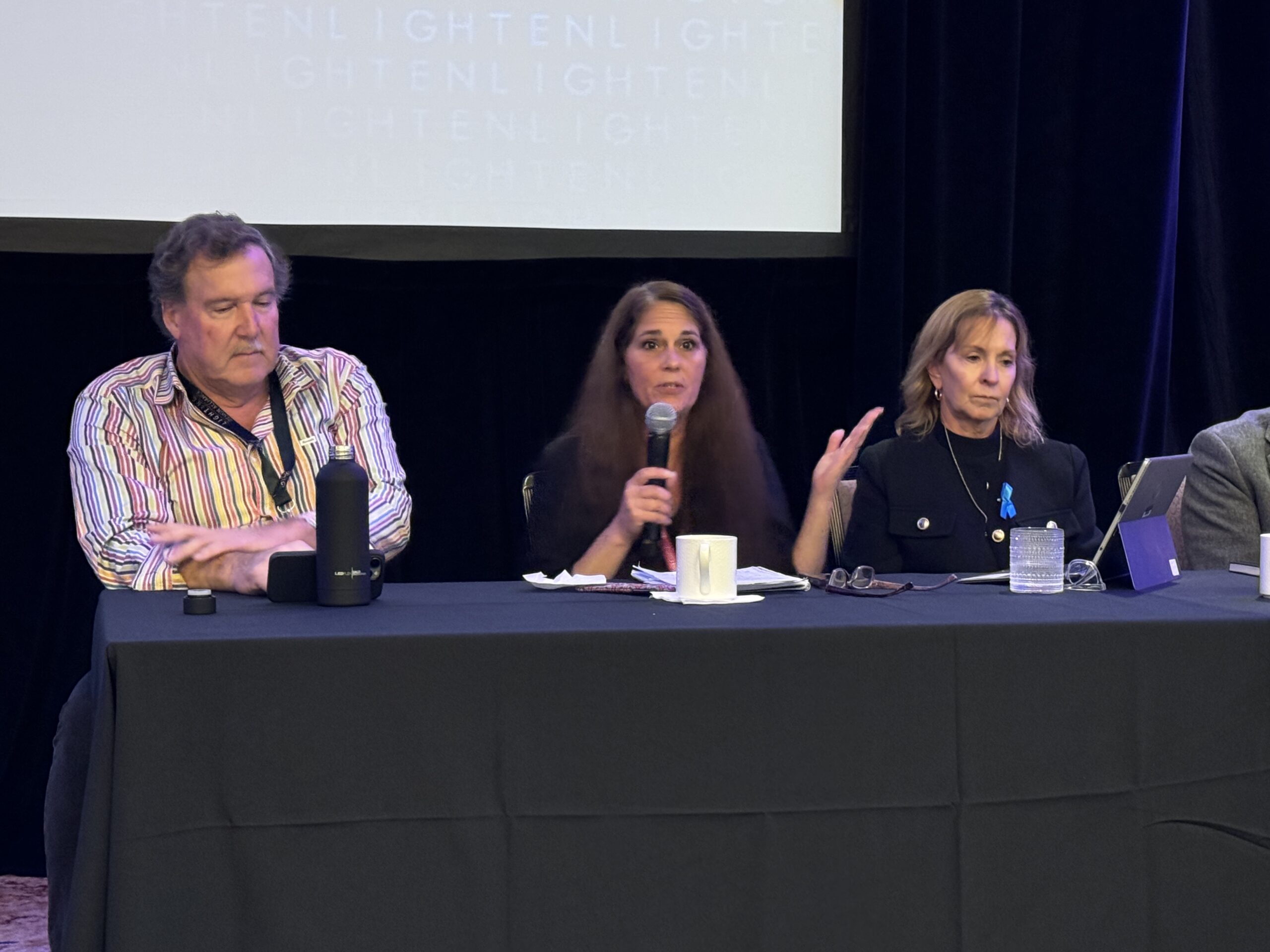
Nancy Stathes makes a point about overage
Agents: More Than Just Salespeople
Nancy described how lighting agents often go beyond their typical sales roles. They assist with fixture selection, provide calculations, offer budget pricing, and absorb risks. “They answer the phone whenever needed and will even deliver samples in 20 minutes,” she said, emphasizing their crucial role in project success.
Distributors in the Value Chain
Nancy also discussed distributors’ varied roles, from stock-and-flow distributors to national account and staging distributors. She explained that distributors act as the financial backbone of the industry, often paying factories within 30 to 45 days, even though they may not be paid for over 180 days. Distributors also handle logistics, resolve conflicts, and ensure that all components are in place before orders are finalized.
The Growing Influence of Contractors
Contractors are increasingly influencing project decisions. One commenter noted that “between 40% and 60% of project decisions are influenced by contractors.” This trend is more prominent in design-build projects, where traditional bid processes are bypassed, often leaving lighting designers out of key decisions.
The Debate on Value-Based Pricing
Jimalee initiated a discussion on pricing transparency, focusing on commissions and overages. She explained that some jobs require more effort, which complicates the notion of flat commission rates. Steven added that value-based pricing depends on the complexity and effort involved in each project.
Negotiations and Relationships
Lara Cordell explained how transparency in pricing, particularly when projects exceed budgets, is essential. She shared that collaboration between manufacturers, reps, and designers helps bring projects back into budget without compromising the original vision. There was also discussion about the distinction between alternates and value-engineered substitutions. An alternate is equivalent to the specified product, while a VE offers a lower-cost option with reduced performance.
Nancy added, “We all need to understand everybody’s role in this marketplace.” Greater transparency, collaboration, and communication across the lighting value chain will ensure that the right products reach the right projects—on time and within budget.
Addressing the Overage Controversy
The conversation returned to the topic of overages. Nancy emphasized that agents provide significant value, from creating control layouts to educating the community. However, many of these contributions go unpaid. Chip noted that overages allow agents to be compensated for the extra services they provide. In the 2023 Banff session, overage stirred passionate debate.
“Returning to the subject of overage, Shoshanna Seegal, of HLD, stirred the audience when she asked to see a show of hands of manufacturers who explicitly exclude overage in their contracts. Zero hands. There was a round of applause when someone suggested public pricing.”
This year, however, the panel and audience seemed more accepting of the practice.
Product Substitutions: A Common Frustration
Alexis highlighted the frustration caused by product substitutions, which often arise due to budget or lead-time constraints. Agents must balance their relationships with lighting designers and their obligation to get their products on the project. Bruce added that substitutions must be carefully vetted with the designer to ensure the integrity of the original vision.
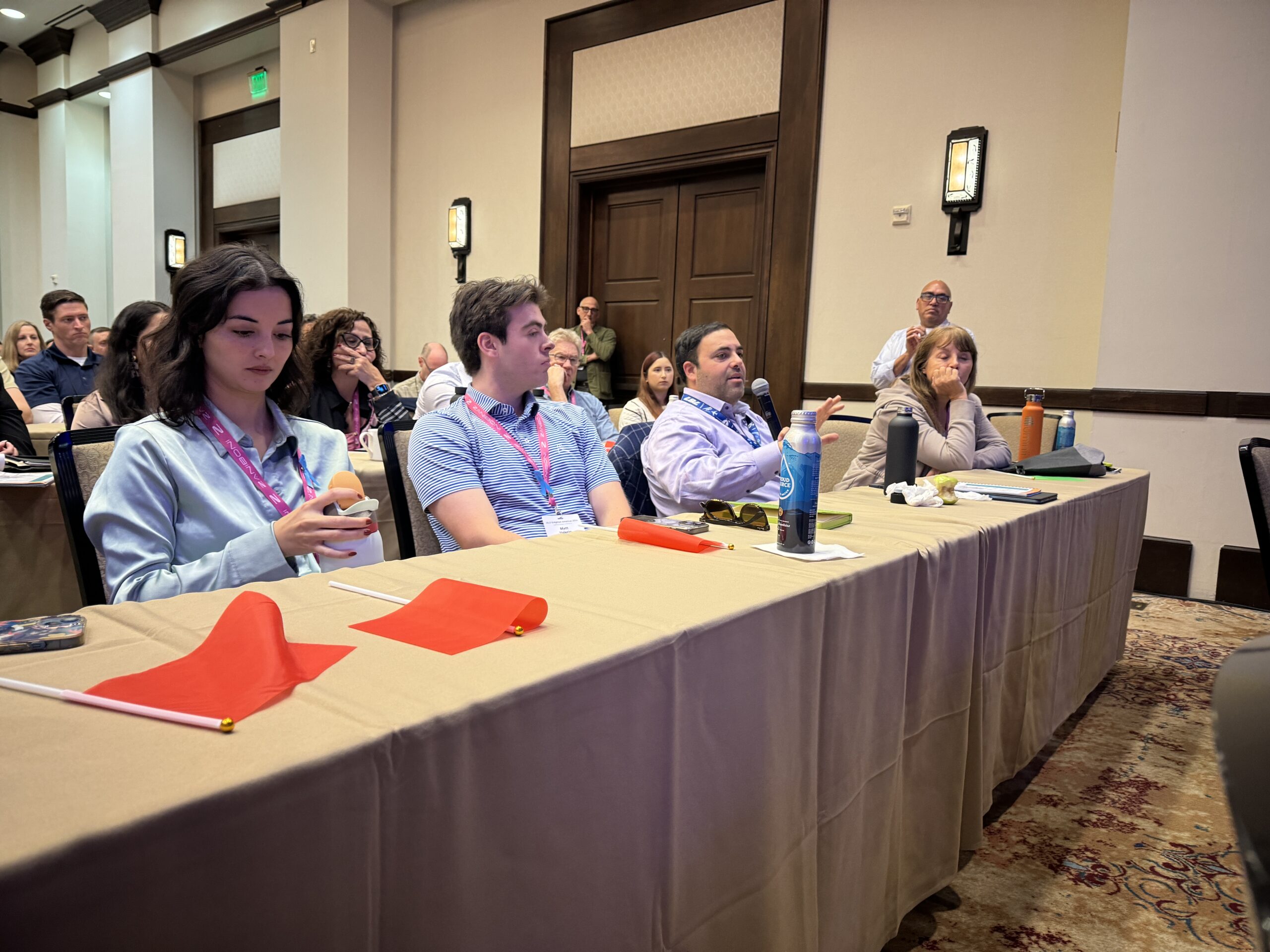
Avraham Mor asks a question
Advocating for Lighting Designers
Avraham Mor asked a thought-provoking question: “If advocacy for lighting designers were stronger, would these challenges be simpler?” The panel agreed that greater awareness of what lighting designers contribute could alleviate many of the industry’s issues, from pricing transparency to the substitution process.

